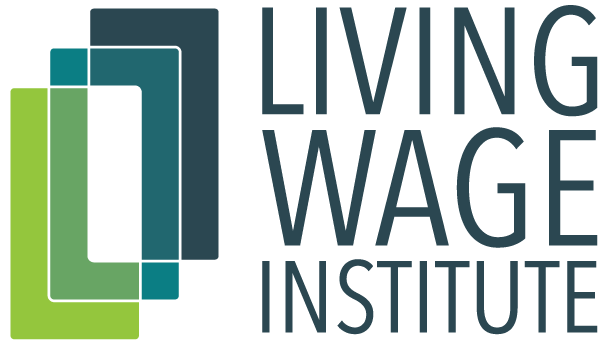It is clear why C. Nicole Mason, president, and chief executive of the Institute for Women's Policy Research, calls the current crisis a "shecession"[1]. During the current economic downturn, women's employment is declining at higher rates than men. Job losses are most elevated in industries dominated by women: leisure, hospitality, education, and retail services. These female-dominated industries are also the most underpaid and undervalued. The average annual earnings for these industries are around $32,700[2]. In the current "shecession," newly unemployed women have little financial support to fall back on.
Women are critical in the fight against COVID. One in three jobs held by a woman is considered vital to public welfare[3]. Women are on the front line fighting the virus. Women occupy 78 % of health care and social assistance jobs[4]. Given these critical jobs, it is unconscionable to find them low-paying. The median wage for healthcare support, service, and direct care jobs is around $13.48 an hour[5]. Low pay, unstable hours, and dangerous working conditions seems illogical, but in America, they are not.
Women's work is not just dangerous it is oppressive and mostly segregated. Seventy-five percent of the health care workforce is female[6]. Almost 50% of direct care workers are persons of color[7]. Women of color are most likely to occupy labor-intensive positions caring for the sick. The incidence of coronavirus infections in health care personnel is very high. Health care personnel account for 11% of total reported cases[6]. Given the close, almost exclusively face-to-face contact experienced in care-giving jobs, women, and women of color are more susceptible to contracting COVID19 than men. In most states, the incidence of coronavirus in women exceeds that of men.
Though women occupy most frontline jobs, they also are some of the most vulnerable workers to the secondary economic effects of COVID-19. Single mothers endure immense difficulties in the face of the Pandemic. Single mothers lead twenty-three percent of households with children under 18, and they comprise about 50 percent of working mothers with children under 18[8,9]. Due to their complex circumstances, they are disproportionately likely to work in low-wage jobs and have inconvenient and irregular hours.
Due to social distancing precautions, the vast majority of schools and daycares are closed. Single mothers face the daily responsibility and stress of needing to find ways to ensure their children are safe and have adequate care throughout the day. The need to stay healthy for their jobs requires social distancing and therefore limited contact with even family members. Managing this daily challenge is not easy. Women can't call on friends and relatives and yet must venture outside the home to support their families.
With recent high unemployment rates and existing low wages for women, especially single mothers, it is no surprise that food insecurity in single-mother households has been on the rise since the start of the Pandemic. 40.9% of mothers with children under 12 report household food insecurity since the beginning of the coronavirus shutdown up from about 15% in 2019[10].
New York City offers a striking example of the virus's impact on women. Four of the top ten high mortality counties in the United States are in the New York metropolitan area. New York City is particularly vulnerable to COVID, given its massive flow of tourists and other travelers. Neighborhoods with the highest residency of frontline workers and the highest poverty rates in children are also where single-parent homes experience the most significant number of coronavirus cases. These communities are predominantly people of color.
Limited in accessing good-paying jobs, single female households are unlikely to make living wages. Poverty rates are already high for female-headed homes in New York City. 56% of single Latinx mothers are poor; 46 % of single Black mothers live below the poverty line, and 28% of single White mothers live on an income below the poverty line[11]. The average salary for a healthcare worker in New York state is $37,380[12]. The living wage estimate for New York County is just less than $70,000. Working a job that pays half the estimated cost of living and threatens a person's and the health of their family is shameful.
The coronavirus is proving that frontline jobs are not only relevant, but they are also indispensable. And yet, single mothers in those jobs put themselves and their households at risk while struggling to feed their families. A living wage is especially critical in the age of the coronavirus.
The Pandemic is raising awareness about the importance of paid sick and family leave, a benefit practically nonexistent in the frontline, low wage jobs. Only 47% of workers whose wages are in the lowest 25% income brackets receive paid sick leave[13]. Single mothers make up a large portion of this group.
The CARES Act does little to address this problem. It requires some firms to provide employees with two weeks of paid sick leave at their full rate. However, it only applies to certain employers and even exempts some health care providers[14]. If signed into law, the proposed Heroes Act would expand paid sick leave by including employers of all sizes and industries. Employers should be encouraged to offer paid sick leave now and long after the global Pandemic. Single mothers should not have to choose between supporting their families or exposing themselves to a deadly virus.
Cassia Schuler is a student at Wellesley College, Holyoke Massachusetts where she studies environmental science.
[1] Gupta, Alisha Haridasani. “Why Some Women Call This Recession a 'Shecession'.” The New York Times, The New York Times, 9 May 2020, www.nytimes.com/2020/05/09/us/unemployment-coronavirus-women.html.
[2] Berube, Alan, and Nicole Bateman. "Who Are the Workers Already Impacted by the COVID-19 Recession?" Brookings, Brookings, 17 June 2020, www.brookings.edu/research/who-are-the-workers-already-impacted-by-the-covid-19-recession/.
[3] Robertson, Campbell, and Robert Gebeloff. "How Millions of Women Became the Most Essential Workers in America." The New York Times, The New York Times, 18 Apr. 2020, www.nytimes.com/2020/04/18/us/coronavirus-women-essential-workers.html.
[4] "Employed Persons by Detailed Industry, Sex, Race, and Hispanic or Latino Ethnicity." U.S. Bureau of Labor Statistics, U.S. Bureau of Labor Statistics, 22 Jan. 2020, www.bls.gov/cps/cpsaat18.htm.
[5] Kinder, Molly. "Essential but Undervalued: Millions of Health Care Workers Aren't Getting the Pay or Respect They Deserve in the COVID-19 Pandemic." Brookings, Brookings, 17 June 2020, www.brookings.edu/research/essential-but-undervalued-millions-of-health-care-workers-arent-getting-the-pay-or-respect-they-deserve-in-the-covid-19-pandemic/.
[6] “Characteristics of Health Care Personnel with COVID-19 - United States, February 12–April 9, 2020.” Centers for Disease Control and Prevention, Centers for Disease Control and Prevention, 16 Apr. 2020, www.cdc.gov/mmwr/volumes/69/wr/mm6915e6.htm?s_cid=mm6915e6_x.
[7] “Employed Persons by Detailed Industry, Sex, Race, and Hispanic or Latino Ethnicity.” U.S. Bureau of Labor Statistics, U.S. Bureau of Labor Statistics, 22 Jan. 2020, www.bls.gov/cps/cpsaat18.htm.
[8] Kramer, Stephanie. “U.S. Has World's Highest Rate of Children Living in Single-Parent Households.” Pew Research Center, Pew Research Center, 30 May 2020, www.pewresearch.org/fact-tank/2019/12/12/u-s-children-more-likely-than-children-in-other-countries-to-live-with-just-one-parent/.
[9] National Women’s Law Center. “A Snapshot of Working Mothers.” April 2017. https://nwlc.org/wp-content/uploads/2017/04/A-Snapshot-of-Working-Mothers.pdf
[10] Bauer, Lauren. "The COVID-19 Crisis Has Already Left Too Many Children Hungry in America." Brookings, Brookings, 12 May 2020, www.brookings.edu/blog/up-front/2020/05/06/the-covid-19-crisis-has-already-left-too-many-children-hungry-in-america/.
[11] Mullan, Jack. “Census Highlights: Single-Parent Households in NYC.” CCC New York, www.cccnewyork.org/blog/single-parent-households-in-nyc/.
[12] "31-9099 Healthcare Support Workers, All Other." U.S. Bureau of Labor Statistics, U.S. Bureau of Labor Statistics, 29 Mar. 2019, www.bls.gov/oes/2018/may/oes3190
[13] "Latest Benefits News Release." U.S. Bureau of Labor Statistics, U.S. Bureau of Labor Statistics, www.bls.gov/ncs/ebs/.
[14] Kinder, Molly. "Essential but Undervalued: Millions of Health Care Workers Aren't Getting the Pay or Respect They Deserve in the COVID-19 Pandemic." Brookings, Brookings, 17 June 2020, www.brookings.edu/research/essential-but-undervalued-millions-of-health-care-workers-arent-getting-the-pay-or-respect-they-deserve-in-the-covid-19-pandemic/.



